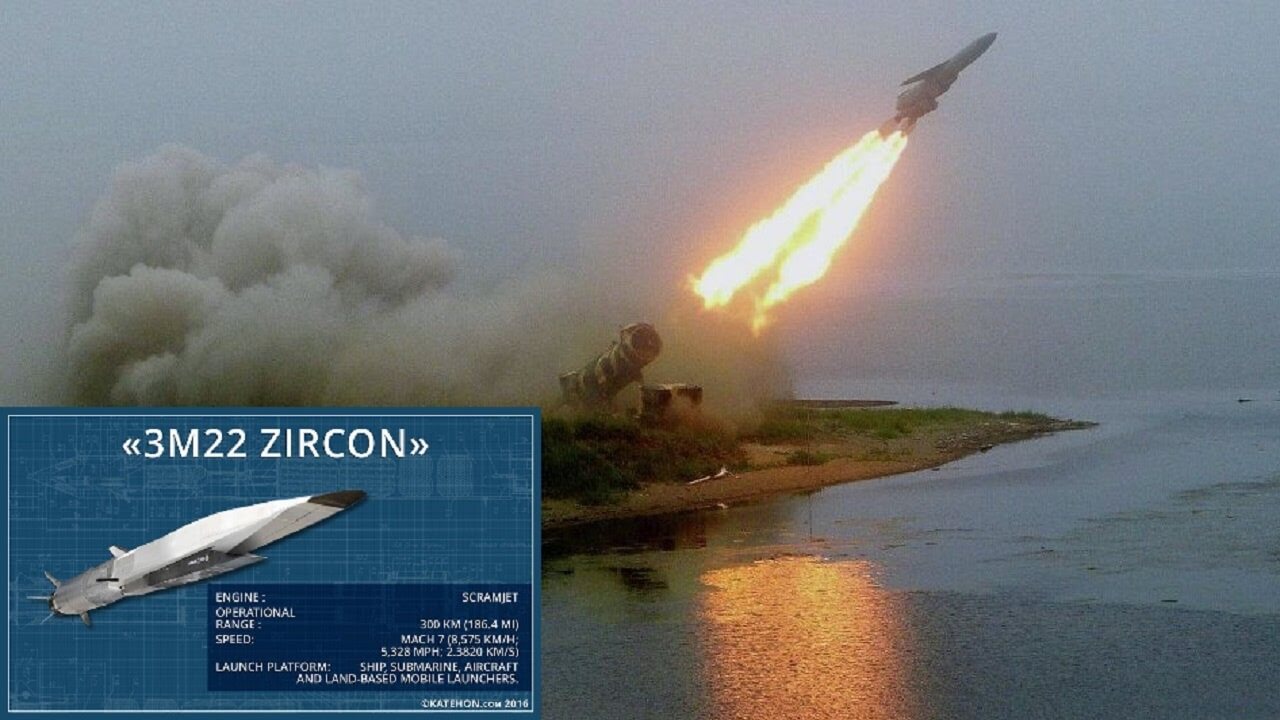Russia has launched serial deliveries of Tsirkon/Zircon hypersonic missiles to the Russian Navy, Defense Minister Sergey Shoigu confirmed.
“We have launched serial deliveries of the Navy-based Tsirkon hypersonic missiles,” Shoigu said. “The frigate Admiral of the Fleet of the Soviet Union Gorshkov with top-notch Tsirkon seaborne hypersonic missile systems undergoes final preparations before embarking on a mission in the world ocean.”
President Vladimir Putin said at the meeting that Admiral Gorshkov, armed with Tsirkon hypersonic missiles, would begin combat duty by January 2023.
Putin also said that Russia would maintain combat readiness and improve the nuclear triad, which is the main guarantee of Russia’s sovereignty.
“We will continue to maintain combat readiness and improve the nuclear triad. This is the main guarantee of preserving our sovereignty and territorial integrity, strategic parity, and general balance of power in the world,” Putin said at a meeting of the Russian Defense Ministry board.
The president added that modern weapons made up 91% of Russia’s strategic nuclear forces.
Russia’s newest land-based intercontinental ballistic missile (ICBM), Sarmat, will be put on combat duty in the near future, Putin said.
“Successful launches of the Sarmat heavy intercontinental ballistic missile during state tests made it possible to start working on its deployment,” Russian Defense Minister Sergei Shoigu said.
The Sarmat system is meant to replace RS-20 Voevoda missile systems. The new missile is capable of striking targets at long ranges using various flight trajectories and is guaranteed to overcome any existing and prospective anti-missile defense systems.
Having the longest range of target engagement, Sarmat is also expected to reinforce the combat capabilities of the Russian strategic nuclear forces. The first test launch of the Sarmat missile was carried out on April 20.

The Russian nuclear triad will be also replenished with the first strategic bomber, Tu-160M, Shoigu added.
Putin said that the nuclear triad, the aerospace forces, and the navy made up Russia’s strengths and, as such, were maintained in good condition. However, more work needed to be done to improve the country’s ground forces and communications systems, according to the president.
At the same time, Putin noted that Russia has everything it needs to build up military potential using its own scientific, technological, industrial, and personnel resources without damaging its economy and social sectors.
Partial Mobilization
Partial mobilization in Russia was conducted to stabilize the situation on the front, defend the country’s new territories and create conditions for a further offensive, Russian Defense Minister Sergei Shoigu said.
“Stabilization of the situation, protection of new territories and further offensive operations required the increase in fighting strength of our troops. Partial mobilization was conducted for that purpose,” Shoigu said at a collegium meeting at the Defense Ministry.
The minister noted that Russia had not carried out mobilization and related activities since the end of World War II, which was why the country faced some difficulties at the early stage of the partial mobilization.
As many as 300,000 Russian citizens were drafted as a result of the mobilization. Another 830,000 Russians were exempted from it since they work at socially, militarily and economically significant facilities and another 20,000 people joined the special military operation as volunteers.
Russian President Vladimir Putin ordered partial mobilization in the country on September 21, the day after the Donetsk and Luhansk breakaway republics, as well as the Russian-controlled parts of the Zaporizhzhia and Kherson regions, scheduled referendums on accession to Russia.
The partial mobilization was prompted by the need to control the 1,000-kilometer (621-mile) contact line between Ukrainian- and Russian-controlled territories, according to Shoigu.
Via: Sputnik News Agency




